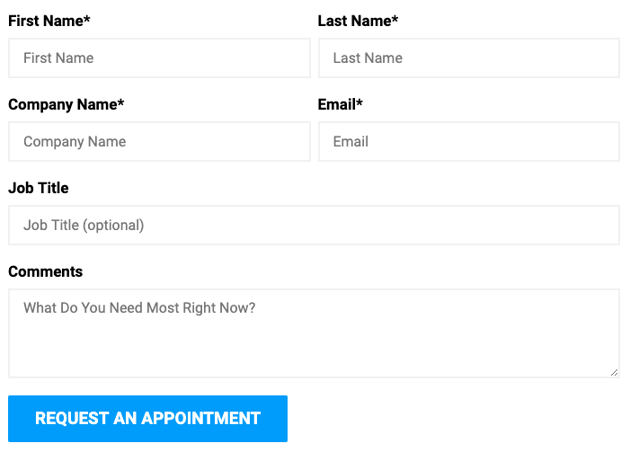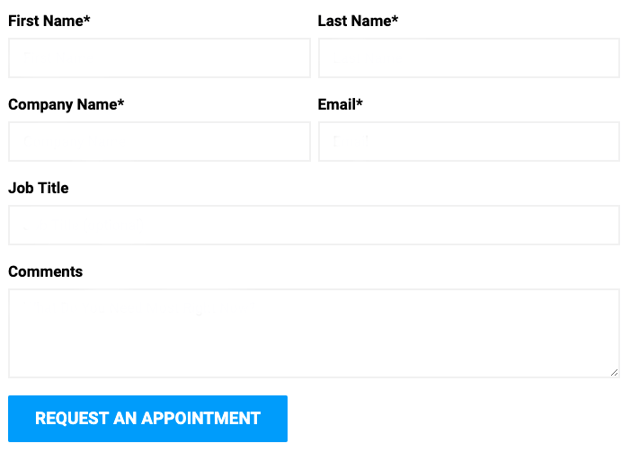
Understanding ADA website compliance can feel overwhelming — especially since the rules and standards continue to evolve. Yet, as our reliance on digital platforms grows, ensuring websites are accessible to everyone is no longer optional; it’s essential.
We'll break down ADA website compliance in clear, practical terms: what it is, why it matters, and how businesses can take steps toward accessibility. While this blog does not constitute legal advice, we’ll cover the key concepts, current standards, and resources you should know to make your website more inclusive — and to reduce the risk of accessibility-related complaints or lawsuits.
What is ADA website compliance?
An ADA-compliant website ensures that the full online experience is accessible to all. This includes people with disabilities, such as visually impaired users, colorblind users, hearing-impaired users, and more.
Under Title III of the Americans with Disabilities Act (or ADA), the Internet is considered a “place of public accommodation.” If you aren’t in compliance or have at least shown an effort to be in compliance, you may face legal repercussions.

What does that mean, in simple terms?
The World Wide Web Consortium sums this up nicely. Principles of an accessible site are:
- Perceivable: The contents of the page must be detectable to everyone, no matter their disability. They can’t be hidden from people who can’t see small print, for example.
- Operable: All users must be able to interact with the components of the page. A website mustn’t provide buttons that can only be clicked by using a mouse, since some people with disabilities can’t use a mouse, and instead use a keyboard, voice control, or some other interface.
- Understandable: All users must be able to understand the meaning of the information on the page, as well as the instructions for interacting with the page’s components.
- Robust: No matter what a web page looks like or what it contains, it has to remain able to be used and understood on a wide variety of devices using a wide range of assistive technologies like screen readers.
ADA compliance levels (A, AA, AAA) explained
ADA compliance falls on a sliding scale, but generally falls into three levels. Level A includes primarily baseline efforts to make your website more accessible to those with disabilities, like ensuring the design passes the colorblind test and organizing the navigation structure logically. Level AA is more complex, involving things like live captioned video content and explaining words that might be hard to pronounce. Level AAA has some components that are nearly impossible to achieve, and really only apply in certain specific industries.
On the simpler end, Level A includes things like:
- Text alternatives for images
- Captions on pre-recorded video content
- Colorblind-proof color usage
- Logical navigation structure
- Label form elements that give instructions
Do:

Don't Do:

- Keyboard accessible page structure
- “Skip to content” bypasses block options
Building on Level A, Level AA takes it up a notch with things like:
- Captions on live video content
- Offering multiple ways to find pages
- Consistent navigation
- Error suggestions when a user makes a mistake
- Contrast ratio between text and background is at least 7:1

- Ability to resize text without loss of content or function
- And more...
And lastly, Level AAA builds on the prior two levels with things like:
- Sign-language interpretations available for video content
- Abbreviation explanations
- Pronunciation explanations
- Detailed help and instructions for functionality throughout the site
- No content flashes more than three times per second
- And more...
You can see a full list of these requirements here.
What should companies be doing about ADA compliance?
That depends greatly on the size of the business, industry, and appetite for potential future risk. Laws are always slow to keep up with technology, but we continue to see an increase in inequality and anti-discrimination laws applied to digital presences.
WUHCAG summarizes it well here:
"Recent years have seen an increase in legal cases brought by charities against companies with bad web accessibility. This trend will continue as those companies reach out-of-court settlements and promise to improve their websites. Acting early might save you a lot of money in the long term."
If you’re a larger organization and reach a broad audience, it’s vital that you implement ADA measures on your website. To be frank, even the most basic websites should comply with most of Level A. Large companies that have the means to implement ADA compliance but have chosen not to will undoubtedly face legal and social pressures to evolve in the next several years. Additionally, large businesses may want to consider hiring a legal counsel who works specifically in the realm of ADA compliance.
If you’re a small or medium-sized business, your potential risk is much lower. Small and medium-sized companies will likely have more flexibility, as they may not have the resources or means to implement changes. For those companies, showing any effort towards compliance may be sufficient over the next few years. As time goes on and tools continue to evolve, ADA compliance will become easier and easier to apply to even the smallest site. As the process becomes easier, the expectations for all companies — no matter the size — will continue to grow.
Lastly, organizations that serve a disabled audience should naturally prioritize ADA compliance efforts. This is the obvious route — both from a legal and moral standpoint.
What level of ADA Compliance should you be striving for?

As far as the level you should be striving for, my recommendation would be to strive for Level AA. Level A is sufficient for now in many cases, but it doesn’t do much to future-proof your website. Level A addresses some very basic accessibility needs. Most of the websites we design and develop meet many or all of the Level AA standards. I’m not the only one who recommends this. Level Access has a great, in-depth article on what level you should be striving for here.
When it comes to Level AAA, much of the criteria may be nearly impossible for companies to reasonably accomplish. For example, sign language interpretation of live events may not be feasible for all organizations — especially smaller organizations. The World Wide Web Consortium notes:
“It is not recommended that Level AAA conformance be required as a general policy for entire sites because it is not possible to satisfy all Level AAA Success Criteria for some content.”
That said, there are plenty of Level AAA elements that are easy enough to apply. The deciding factor on whether you should be implementing Level AAA compliance comes down to your users — what will make your website more accessible to your user base?
It’s about more than legal risk; it's the right thing to do

Beyond the legal and social expectations, there’s a serious business case to be made for why ADA compliance is so important. According to the American Foundation for the Blind, approximately 2.5 million people in the U.S. live with both vision challenges and hearing loss or deafness. That is a large group of potential customers you may not be reaching with an inaccessible website.
In addition, according to the Genetics Home Reference, 1 in 12 men and 1 in 200 women are colorblind. This can have an enormous impact on website usability. For example, if the colors you’re using to distinguish an important call-to-action button aren’t noticeable to someone with a color vision deficiency, you may be losing an opportunity to convert on your site with a huge number of people.
But here's where accessibility gets even more compelling — the benefits extend far beyond users with disabilities. When you design with accessibility in mind, you're creating a better experience for everyone. Captions on videos help people in noisy coffee shops or quiet libraries. Clear navigation structures and descriptive link text make websites easier to use for all visitors, regardless of their technical expertise. High contrast designs improve readability for everyone, especially on mobile devices in bright sunlight.
You're not just accommodating specific needs — you're building a more intuitive, user-friendly experience that benefits your entire audience while expanding your market reach. And while the legal, social, and business cases for accessibility are compelling, perhaps the most powerful reason remains the simplest: creating a more accessible world — whether physical or digital — is simply the right and moral thing to do.
Next steps
If you haven’t already begun implementing some level of ADA compliance, I highly recommend that you explore it this year. This has become even more vital through the always-growing increase in online activity. Individuals who perhaps would have accessed your products or services at a physical location must be able to navigate them in a digital space. Creating an accessible experience is more important than ever.
Here are a few of my favorite resources to help you get started:
- Here’s a great resource from WUHCAG: Checklists for each level of ADA compliance.
- For all my developers out there: HubSpot has a great hub of CMS-related resources.
- If you’re looking for more information on color accessibility, check out this color contrast checker.
- If you’re looking for a tool to create video transcriptions or captions, we use Rev.
- For designers working in Adobe XD, Figma, or Sketch, there are many plugins to help verify ADA compliance. One of our favorites is Stark, an accessibility tool that checks things like the contrast.
Wondering if it's time for a complete refresh? Check out our blog 'How Do You Know If You Need a New Website' to discover the key signs that indicate your site might be due for an upgrade!
